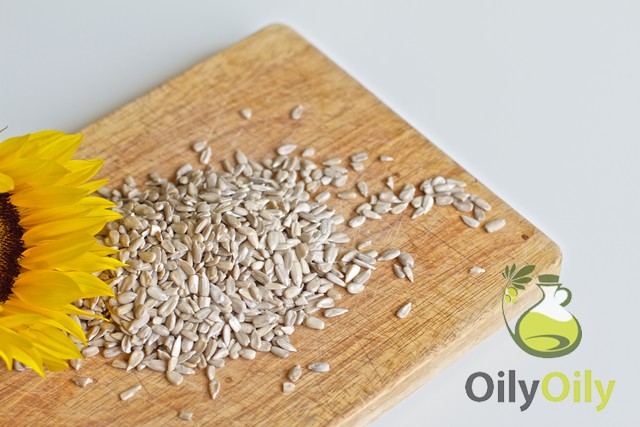
High oleic sunflower oil is a variety of traditional sunflower oil. It comes from the seeds containing a high amount of monounsaturated fat in the form of oleic acid. Such oil is minimally 80 percent essential oleic (Omega-9) fatty acid, according to the National Sunflower Association. In fact, the lipid composition of high oleic sunflower oil is very similar to the one of olive oil. It is considered being a truly healthy choice for various applications.
However, there are also the side effects of high oleic sunflower oil consumption, if it is not moderate. As long as you take no more than two tablespoons of the oil daily, you should only benefit and see no side effects. However, before using high oleic sunflower oil for medical purposes or adding to your diet in a larger quantity, you should consult your doctor.
First of all, high oleic sunflower oil presents a potential risk for those who
- suffer from diabetes
- allergic to plants within the sunflower family (ragweed, daisies, marigolds and others).
SEE ALSO: Top 3 Uses for Sunflower Oil
As WebMD states, high oleic sunflower oil mildly increases blood sugar and influence insulin level. Therefore, people with type 2 diabetes can experience the side effect of developing hardening of the arteries. Several studies prove that allergic reactions to sunflower oil are very rare cases. Their main symptoms can be swelling, skin rashes and itching, stomach cramping, nausea and vomiting. Highly refined oil usually does not provoke allergy.
Another high oleic sunflower oil side effect is documented, according to the article in Journal of the National Cancer Institute (2001). High levels in the body of both oleic and momounsaturated fatty acid are associated with the increased risk of breast cancer.
High oleic sunflower oil, like any other oil indeed, is 100% fat. Only one tablespoon of the oil contains 120 calories. Therefore, eating a large quantity of high oleic sunflower in a day will use up a great percentage of daily caloric allowance and can lead to weight gain.
 Oilypedia.com – Benefits And Uses Of Supplemental and Essential Oils
Oilypedia.com – Benefits And Uses Of Supplemental and Essential Oils 


